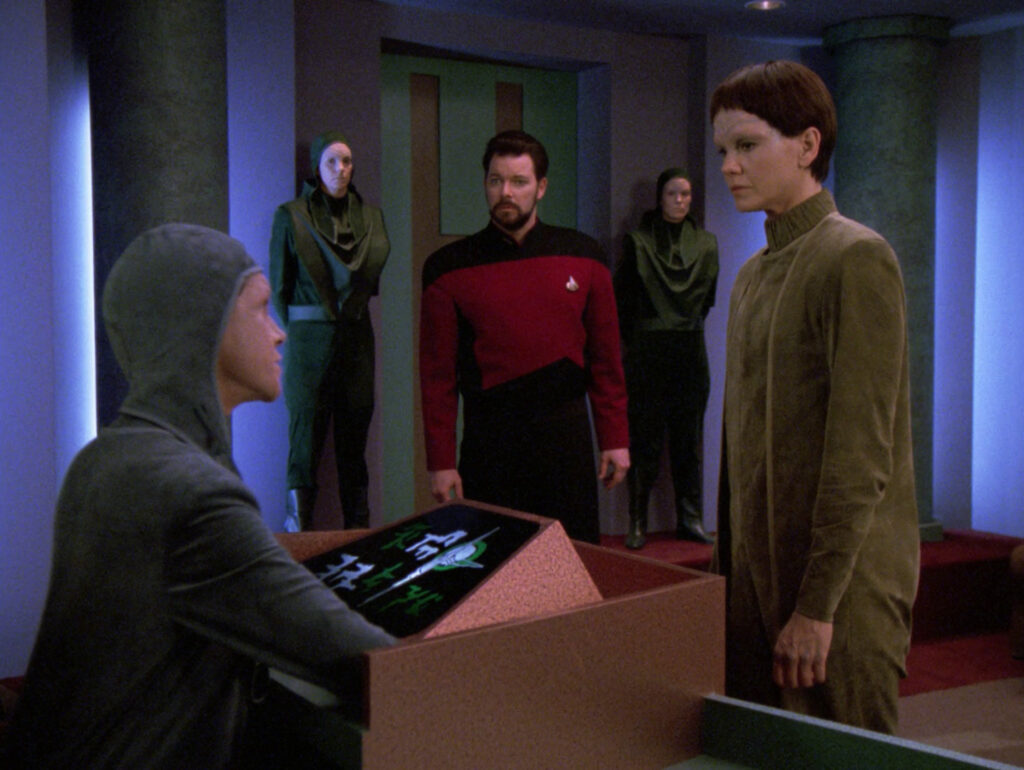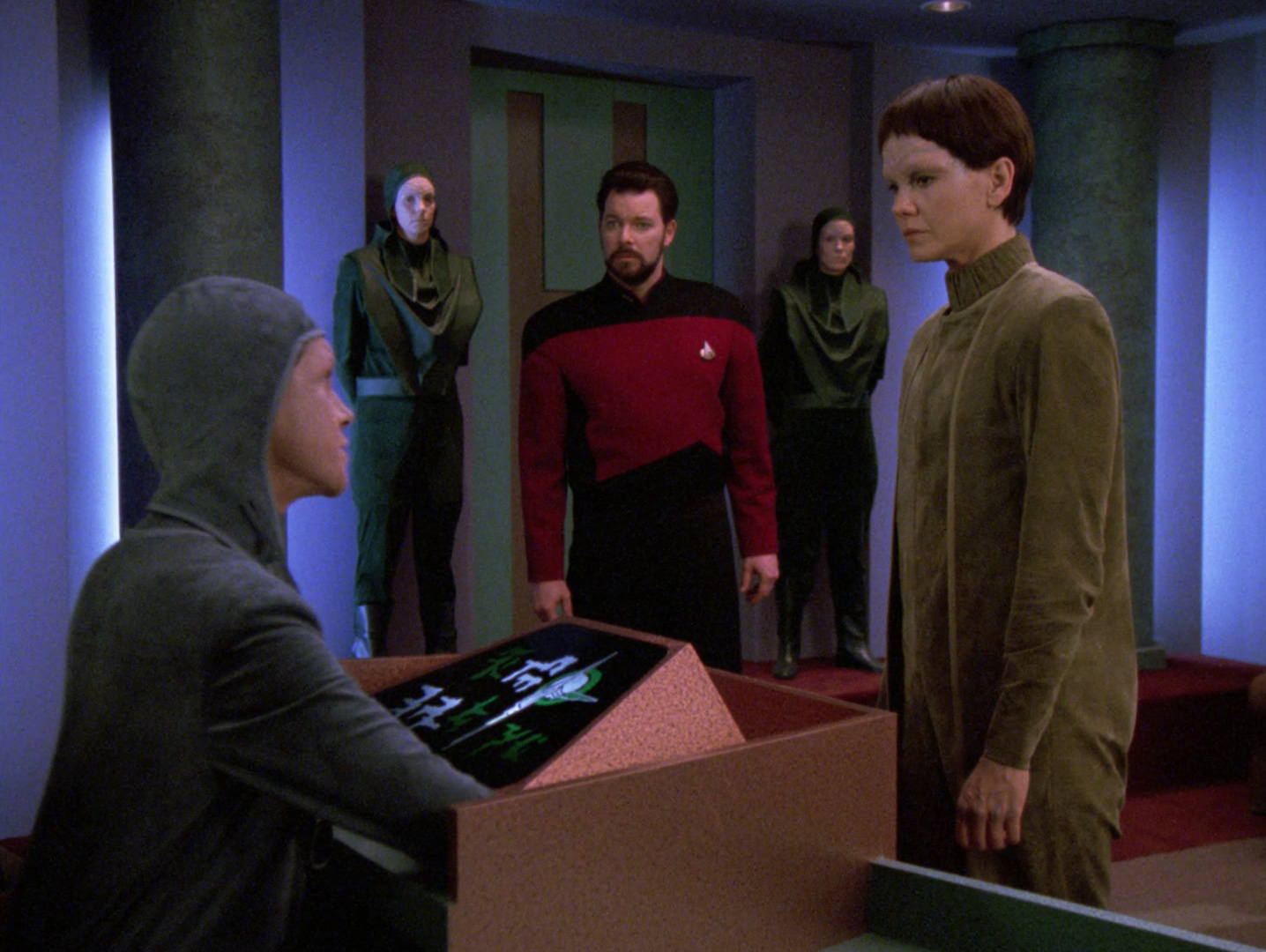We must understand the day’s culture to grasp proper hermeneutics in Bible interpretation fully. With that, I would like to take you down memory lane. Let’s revisit Star Trek: The Next Generation’s “The Outcast.”
The picture below is taken from season 5, episode 17 of Star Trek: The Next Generation’s “The Outcast,” which aired March 16, 1992. I remember when this aired as it pushed the envelope of what was happening during that period.

The plot (TLDR version):
The Enterprise is contacted by a humanoid race called the J’naii. They are a race who have no gender. They ask the crew for help in finding a shuttle that has gone missing. Riker (seen in red) falls in love with Soren – a member of that race who identifies as female. The J’naii are an androgynous species that view the expression of any male or female gender, especially sexual liaisons, as a sexual perversion. Those among the J’naii who view themselves as possessing gender are ridiculed, outcast, and forced to undergo “psychotectic therapy” – a form of conversion therapy meant to remediate gender-specificity and allow acceptance back into J’naii society.
The “hindsight” issue:
Many who rewatch this episode believe that this episode highlighted the plight of the transgender community. This is inaccurate. While some individuals underwent gender reassignment, the trans movement was not in the limelight as it is today. During the early 1990s, this episode spoke to the homosexual community and conversion therapy.
In interviews and discussions:
Jonathan Frakes (Commander Riker): Frakes mentioned that he thought the episode’s message could have been more potently delivered if Soren had been more obviously female, thereby highlighting the homosexual undertones of the story more clearly. He believed this would have given the message even more impact in the early ’90s setting.
Rick Berman (producer): Berman has said that the episode was an allegory for the struggles faced by gay and lesbian individuals, especially in light of the “don’t ask, don’t tell” policies in the U.S. military at the time.
To fully understand this, the “T” was not added to the LGBT until later.
The initial term “gay community” expanded to “gay and lesbian community” during the latter part of the 20th century. The acronym “LGB,” standing for Lesbian, Gay, and Bisexual, began seeing usage in the late 1980s and early 1990s.
The “T,” representing Transgender individuals, was added in the mid-to-late 1990s. This inclusion was significant, emphasizing the distinction between sexual orientation (LGB) and gender identity (T).
So, the transgender community would not have been on the minds of the writers, producers, or actors during the 1992 airing.
So, what does this have to do with the Holy Bible?
As we can see, thirty years can warp the perspective of culture. The true intentions of the episode are lost on some within a new generation that focuses on seeing society through THEIR eyes and not the eyes of the people living during the 90s.
The same can be said of some modern interpretations of Holy Scripture.
Proper hermeneutics forces the Bible scholar to look through the lens of the writers of the day, the culture, and what was happening when the books were written. Do we need this information to understand the Holy Bible? No, we don’t, but it adds to the interpretation. Many sitting in the church pews have an American-centric approach to Holy Scripture. Others have similar “idols” in the way of proper interpretation. To properly understand the Holy Bible, we must abandon our preconceived notions about what makes sense and adopt a “what was happening back then” mentality.
Sources used:
- Star Trek: The Next Generation. Season 5, Episode 17, “The Outcast”.
- Various interviews and commentary by the creators and actors associated with Star Trek: TNG.
- Halperin, D. M. (1995). Saint Foucault: Towards a gay hagiography. Oxford University Press.
- Jagose, A. (1996). Queer theory: An introduction. New York University Press.
- Turner, W. B. (2000). A genealogy of queer theory. Temple University Press.





